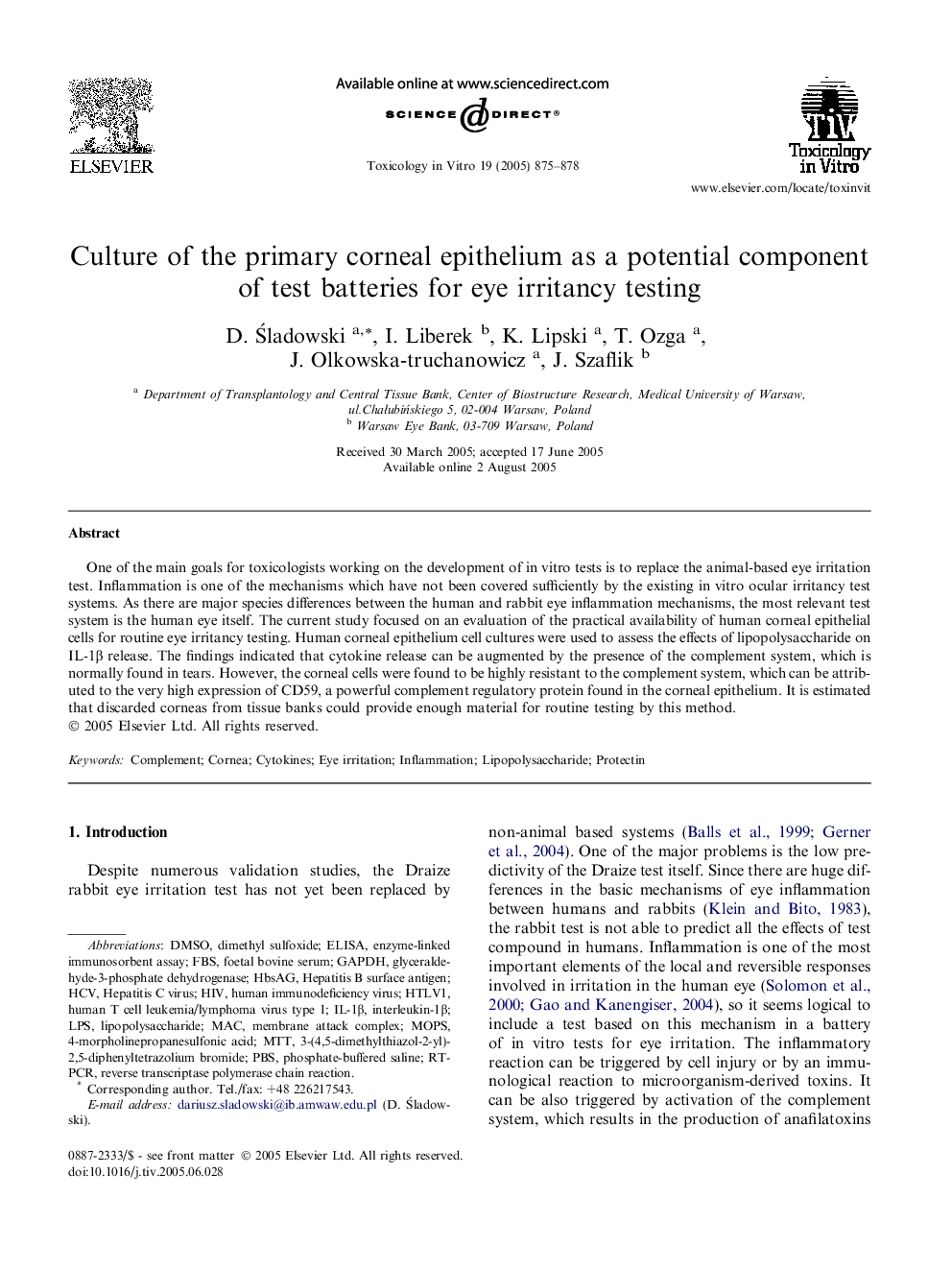| Article ID | Journal | Published Year | Pages | File Type |
|---|---|---|---|---|
| 9038788 | Toxicology in Vitro | 2005 | 4 Pages |
Abstract
One of the main goals for toxicologists working on the development of in vitro tests is to replace the animal-based eye irritation test. Inflammation is one of the mechanisms which have not been covered sufficiently by the existing in vitro ocular irritancy test systems. As there are major species differences between the human and rabbit eye inflammation mechanisms, the most relevant test system is the human eye itself. The current study focused on an evaluation of the practical availability of human corneal epithelial cells for routine eye irritancy testing. Human corneal epithelium cell cultures were used to assess the effects of lipopolysaccharide on IL-1β release. The findings indicated that cytokine release can be augmented by the presence of the complement system, which is normally found in tears. However, the corneal cells were found to be highly resistant to the complement system, which can be attributed to the very high expression of CD59, a powerful complement regulatory protein found in the corneal epithelium. It is estimated that discarded corneas from tissue banks could provide enough material for routine testing by this method.
Keywords
FBS, foetal bovine serumGAPDH, glyceraldehyde-3-phosphate dehydrogenaseHBsAg, hepatitis B Surface AntigenIL-1β, interleukin-1βMAC, membrane attack complexMTT, 3-(4,5-Dimethylthiazol-2-yl)-2,5-Diphenyltetrazolium BromideRT-PCR, reverse transcriptase polymerase chain reactioninflammationELISA, enzyme-linked immunosorbent assayDMSO, dimethyl sulfoxideEye irritationCytokinesCornealipopolysaccharideComplementprotectinPBS, phosphate-buffered salineLPS, lipopolysaccharideMops, 4-morpholinepropanesulfonic acidHIV, human immunodeficiency virusHCV, hepatitis C virus
Related Topics
Life Sciences
Environmental Science
Health, Toxicology and Mutagenesis
Authors
D. Åladowski, I. Liberek, K. Lipski, T. Ozga, J. Olkowska-truchanowicz, J. Szaflik,
